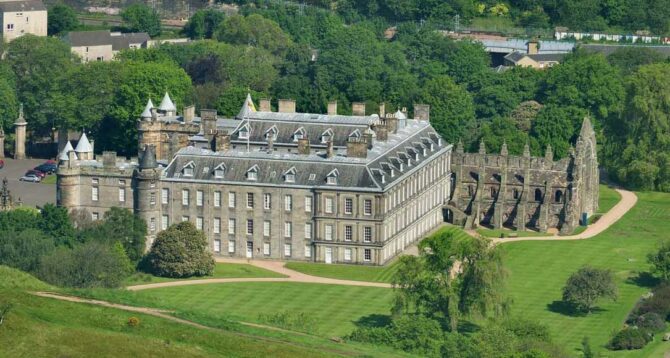
Scotland’s capital city has witnessed centuries of royal presence, from the ancient kings to the current royal family.
While not all attractions boast direct connections to the royal family, some possess historical significance or cultural relevance that intertwine with the city’s royal past.
For the historical sleuths with a love for all things regal, this list of Edinburgh’s royal attractions includes some less well-known places in Edinburgh to investigate.
Some of the entries have links to further information on Truly Edinburgh or other authoritative sources.
King David I granted Edinburgh ‘Burgh’ status
David granted Edinburgh the legal privilege of ‘burgh’ status shortly after coming to the throne in 1124.
Consequently examining the life of David I, King of Scots might be a good place to start.
During 2024, 900 years after the declaration of burgh status, the University of Edinburgh, Museums and Galleries Edinburgh and others produced a number of events to mark the anniversary.
They were based around the theme, “Early Edinburgh: City of David?”
Dr Emily Joan Ward, a lecturer in Medieval Scottish History at the University of Edinburgh was one of the scholars who took part.
“David granted Edinburgh the legal privilege of ‘burgh’ status shortly after coming to the throne in 1124.
Dr Emily Joan Ward, a lecturer in Medieval Scottish History at the University of Edinburgh
Sadly, there is no surviving founding Edinburgh charter. However, a 1127 Dunfermline Abbey royal charter refers to “my burgh of Edinburgh.”
Edinburgh’s Royal Attractions
1) St Margaret’s Chapel on Edinburgh Castle
The aforementioned King David I built this lovely little chapel c.1130, in memory of his mother Queen Margaret, later St Margaret. Edinburgh’s oldest surviving building sits high on the upper level of Edinburgh Castle.
On a more sombre note, In June 1560, the body of Mary of Guise, queen of Scotland and mother of Mary Queen of Scots, lay in the chapel for some time before being returned to France for burial.
- More information about St Margaret’s Chapel from Truly Edinburgh.
2) Edinburgh Castle
Over the centuries, Edinburgh Castle had connections to a number of kings and queens of Scotland including the remarkable Queen Margaret mentioned above.
Margaret was the wife of Malcolm III (Malcolm Canmore ) remembered as the man who killed the real King Macbeth at the Battle of Lumphanan in 1057.
She died in the castle after hearing her husband had been killed fighting against the English in Northumberland.
On an interesting historical note, in 1314, after the Scots victory at the Battle of Bannockburn, King Robert the Bruce ordered the destruction of Edinburgh Castle to stop it falling into English hands.
However, perhaps the most famous was Mary Queen of Scots who gave birth to the future King James VI in the castle on 19th June 1566.
David II (1324-1371) invested heavily in the fortification and modernisation of Edinburgh Castle. Additionally, he used the castle as a base for his government and royal court.
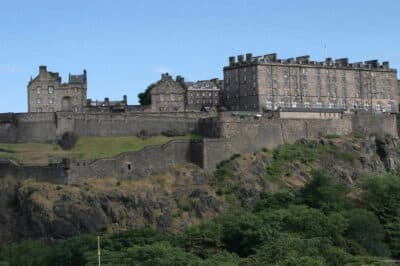
James IV and his wife Margaret Tudor, sister of Henry VIII, lived at the castle for a period during their reign. James oversaw the completion of the magnificent Great Hall in 1512. He was killed at the Battle of Flodden the following year.
In August 1822, George IV visited the castle during his ‘controversial’ visit to the city. Queen Victoria arrived in 1842.
- More information about Edinburgh Castle from Truly Edinburgh.
3) Riddle’s Court
Riddle’s Court which is situated on the Lawnmarket, part of the Royal Mile, was the scene of a royal banquet attended by King James VI and his wife Anne of Denmark. in 1598.
The court was later the home of David Hume, one of Edinburgh’s great Enlightenment figures. Although no longer a family home, the court has become a, Edinburgh visitor attraction with royal connections.
The Scottish Historic Buildings Trust has more information.
4) John Knox House
John Knox House located on the High Street, part of the Royal Mile was probably never the home of the famous Protestant preacher.
Today part of the Scottish Story Telling Centre it does have a fascinating royal connection, albeit a little tenuous.
Early records of 1566, show the owners of the house were Mariot Arres and James Mossman.
James Mossman was an loyal supporter of both Mary of Guise and her daughter Mary Queen of Scots and that’s where the royal connection comes from.
As a reward for his support, Mary Queen of Scots appointed Mossman as goldsmith and jeweller to the crown, and master of the Royal Mint. That’s where the story gets interesting.
- More information about John Knox House from Truly Edinburgh.
- The official website of the Scottish Storytelling Centre
5) Royal Yacht Britannia: an Edinburgh royal attraction
The Royal Yacht Britannia was built on the River Clyde in Glasgow and launched in April 1953.
It subsequently served as a floating home for for Her Majesty Queen Elizabeth II and her family for over 40 years.
Today the yacht is moored in the Port of Leith and is one of Edinburgh’s royal attractions.
More information about the Royal Yacht Britannia from Truly Edinburgh.
More information from the Royal Yacht Britannia official website.
6) Craigmillar Castle
Craigmillar Castle, although not far from the city centre, is set in a peaceful location within a natural heritage park.
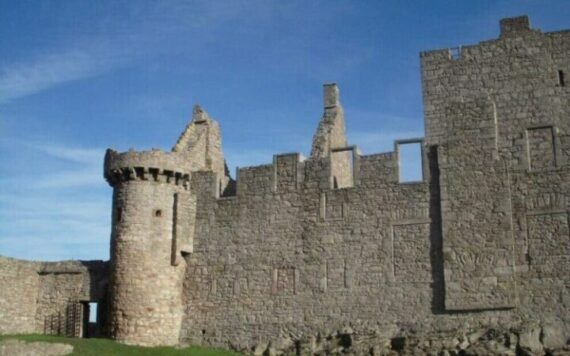
Always a favourite of Mary Queen of Scots, it was the place that she fled to in March 1566, after the murder of her secretary David Rizzio in the Palace of Holyroodhouse.
It may also have been the place where the plot to murder her husband Henry Stuart, Lord Darnley was conceived.
- More information about Craigmillar Castle from Truly Edinburgh.
7) St Giles’ Cathedral: Great High Kirk of Edinburgh
Records show that Mary Queen of Scots visited the Great High Kirk of Edinburgh on the Royal Mile, a number of times during 1560, as did her son James VI/I.
The late Queen Elizabeth II had a long association with St Giles’ Cathedral. It was here on September 2022 following her death at Balmoral Castle the queen’s coffin rested before the journey to London.
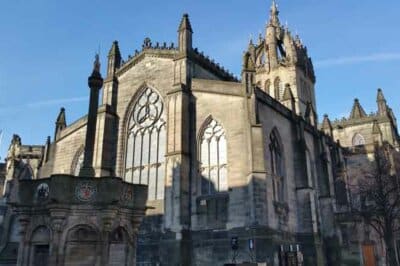
8)The Palace of Holyroodhouse
The Palace of Holyroodhouse, also known as Holyrood Palace, stands at the foot of Edinburgh’s Royal Mile. Mary Queen of Scots lived here between 1561 and 1567.
This wonderful place is the very essence of royal Edinburgh.
Queen Victoria and her family used the residence from about 1850 onwards. It was a convenient stopping point on the journey from London to her beloved Balmoral Castle.
More recently is became the official Edinburgh residence of the current British royal family including the late Queen Elizabeth II.
- More information about the Palace of Holyroodhouse from Truly Edinburgh
9) Holyrood Abbey
Holyrood Abbey, founded by King David I in 1128, stands in the grounds of the Palace of Holyroodhouse.
It was James IV who first began the process of converting the abbey into a royal palace.
However in 1322, when England’s Edward II sent his army north some of the Border abbeys and much else were destroyed.
John of Fordun
Edward “Sacked and plundered the monasteries of Holyrood in Edinburgh and Melrose…”
A number of royals were buried in the abbey say Historic Environment Scotland:
- David II
- James II
- James V
10) Memorial plaque to Mary Queen of Scot’s last night in Edinburgh
While not an Edinburgh royal visitor attraction in the traditional sense, this plaque does mark the spot of an important royal occasion.
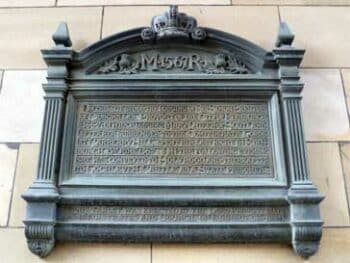
Mary Queen of Scots spent her last night in Edinburgh at the home of Sir Simon Preston of Craigmillar. This was after her defeat at the Battle of Carberry Hill in June 1567.
She was subsequently taken to Holyrood Palace and then to Lochleven Castle.
A plaque marks the site of the house where Mary spent her last night in Edinburgh. It reads:
“Here, on the night of June 15-16, 1567, Mary Queen of Scots spent her last night in Edinburgh before being taken to Lochleven Castle.”
Unknown
11) The Royal Mile
The Royal Mile, Edinburgh’s historic thoroughfare is a traditional royal processional route.
It stretches from the majestic Edinburgh Castle to the regal grandeur of the Palace of Holyroodhouse.
How many fascinating stories could it tell?
- Find some of the answers on this article about the Royal Mile from Truly Edinburgh
- Edinburgh World Heritage has some further information about the Royal Mile
Edinburgh’s royal attractions: in conclusion
Edinburgh boasts a rich royal history, evident in its historic sites. From the grandeur of Holyrood Palace to the intricate beauty of St Giles’ Cathedral, a visit to Edinburgh offers a glimpse into Scotland’s royal past.
Whether you’re a history buff or simply looking for a fascinating day out, Edinburgh’s royal attractions are sure to leave a lasting impression.
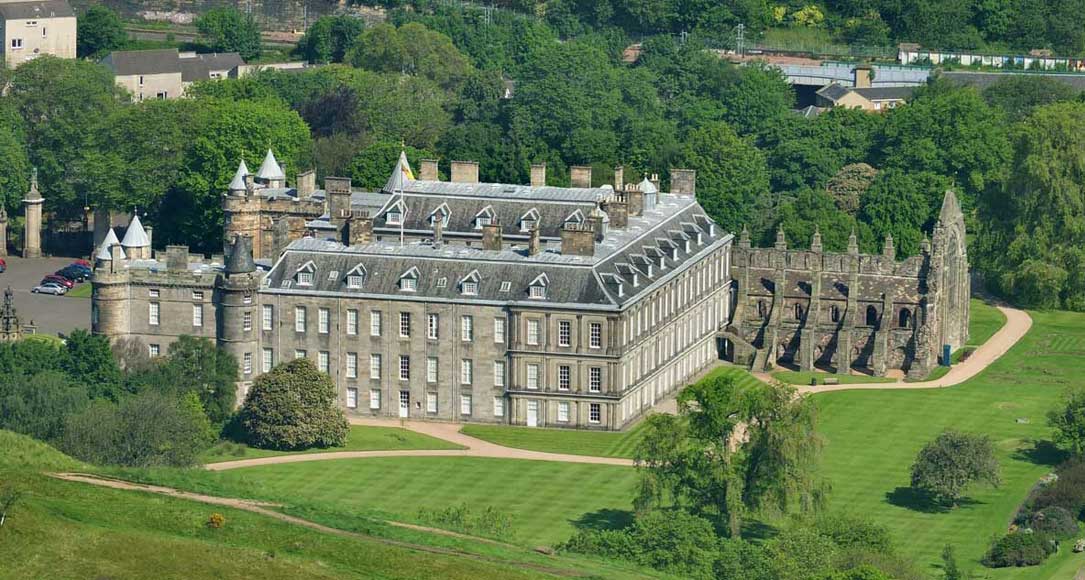
Read Mary Queen of Scots in Edinburgh : a historical journey
This article on Truly Edinburgh looks at some of the people and places in Edinburgh that are associated with Mary Queen of Scots.